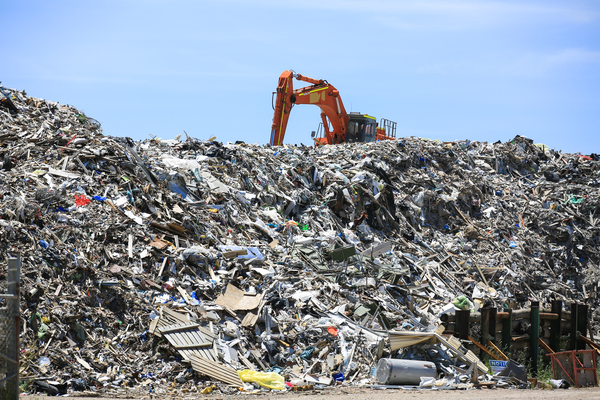A “mammoth” clean-up of an abandoned waste stockpile at Lara could take three years, authorities warned yesterday.
Environment Protection Authority Victoria (EPA) was still planning how to clear the Broderick Rd site months after taking responsibility for the project, said regional manager Carolyn Francis.
C and D Recycling abandoned the site last year, leaving behind a pile of waste big enough to fill about 11,500 standard-size shipping containers. C and D owner David McAuliffe subsequently went bankrupt before site owner TASCO was liquidated, leaving taxpayers with the clean-up bill.
State Government has committed $30 million to the work and vowed to join the EPA in pursing the “duty holder” for the rest of the cost.
“The final removal of an estimated 320,000 cubic metres, or hundreds of tonnes, of mixed waste may take up to three years,” Ms Francis said.
“It is not just the sheer size of the stockpile that is challenging, it is the mix of construction and demolition waste, including timber, concrete, bricks, plaster, glass and ceramics, and the fire and contamination hazards the stockpile can still present if it is not carefully managed.
“This operator has left a mess at the site bigger than anything we have previously seen in the state for this kind of waste. This will be a long and complex clean up to deliver.”
Ms Francis said the removal must be “well-planned” to ensure the safety of clean-up workers and “the community at large”.
“We hope to begin moving some of the already-sorted materials like timber and mulch within the next few weeks and we will continue to keep the community informed along the way. There will also be a community information session in September to talk about the project and provide further information – details will be provided shortly.”
The EPA’s planning would “maximise recovery of recyclable materials” while trying to keep costs down and minimising the use of landfill space,” Ms Francis said.
“Of course, EPA will need to make decisions about the best way to manage materials as they are removed from the piles, and where sending them to landfill is the safest and most logical option, then that’s what will be done.
“Once work begins, people can expect to see a greater number of trucks entering and leaving the site. There may be some dust once the excavators begin work, but we will have mitigation measures in place to keep that to a minimum, along with continued measures to manage any potential fire risks.”
The EPA was establishing a site office and would monitor conditions onsite while the clean-up proceeded, Ms Francis said.







